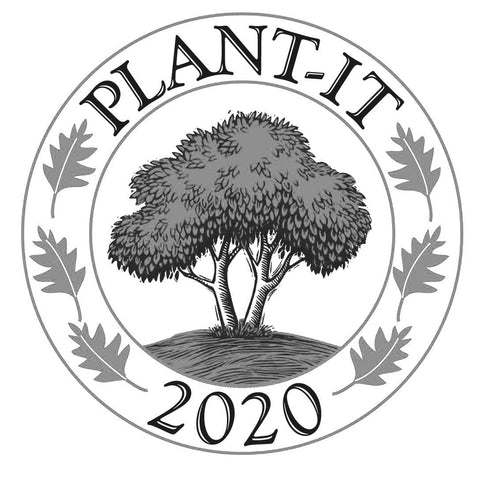Two things about Daneson seem at odds. On the one hand, we identify with life outdoors and the good things it brings. On the other hand, birch trees are harvested to make our toothpicks. Granted, every business has a conflict of this sort if you dig deep enough. However, for Daneson, our connection to the forest is unambiguous.
Embracing the idea of putting back more than we take is a good thing. The way birch forests grow creates an opportunity to plant many times–100 times more, to be exact—back into forests. In addition, we prioritize planting non-commercial species in conservation easements.
It's better to sleep well than it is to eat well.
Our Plan — 1:100 For every one tree milled into toothpicks, we're planting one hundred in its place. We've teamed up with our friends at Plant-It 2020 to do this.
 How Do We Compare? How Do We Compare? Each year in the United States, the logging industry is estimated to harvest 900 million trees and replant approximately 2.5 billion trees. This ratio equates to a reforesting ratio of just over two and a half trees for one every tree harvested. That's 1:2 versus Daneson's 1:100.
How Do We Compare? How Do We Compare? Each year in the United States, the logging industry is estimated to harvest 900 million trees and replant approximately 2.5 billion trees. This ratio equates to a reforesting ratio of just over two and a half trees for one every tree harvested. That's 1:2 versus Daneson's 1:100.
In planting 100 trees for every individual tree we harvest, we are committing to a reforestation ratio that exceeds the logging industry's by nearly 40 times.
What is Plant-It 2020? Plant-It 2020 is a non-profit foundation that performs worldwide tree planting. Their services not only help reforest the world's cities and forests - but they also have a wood stove program that provides direct humanitarian aid by reducing hunger, thirst, malnutrition, poverty, and indoor pollution, while increasing the sustainability not only of the world's forests but its people too.
What Sets Plant-It 2020 Apart? What Sets Plant-It 2020 Apart? Plant-It 2020's reforestation program ticks all the natural wealth boxes we care about. First, their priority is to plant seedlings in non-harvest regions. This means the bulk of our trees will never be logged. They also plant non-commercial indigenous tree species. Typical reforestation focuses on single-variety, fast-growing commercial species. Lastly, Plant-It 2020 goes the extra mile to ensure the seedlings have higher-than-average survival rates.
1% of revenue was allocated to reforestation.
North American riparian zones and wilderness areas lost to 20th century logging.
90% of efforts were focused on replanting US west coast forests shattered by recent fires.
5% was directed towards at Nepal to replenish forests destroyed by earthquakes.
The remaining 5% was directed at Madagascar's mangrove estuaries and northwest coastal areas.
Replenishing US forests denuded by fire in 2017. In particular, California, Washington, and Montana.
Reforestation projects in Mexico and Costa Rica.
Primarily replenishing US forests damaged by beetles, fire, and drought. In particular, California, Florida, Georgia, New York, Ohio, and Washington State.
Secondary areas of focus are in Madagascar, Nepal, Mexico, England, Africa, and Latin America.
Our efforts remain strong in Madagascar, Nepal, and Mexico, and we have been putting even more focus on the USA than we did in 2019.
Our efforts continue to remain strong in Latin America and mainland Africa. We are also focusing on riparian zones and wilderness areas across various US states.
The primary focus was on regions within the interior of Nepal, the NW Madagascar Coast and various regions within the US with particular emphasis on Florida, Tennessee, Colorado, Vermont and New York. Western Canada, Mexico and Kenya were also a focus.
Plant-It 2020 is looking at California more strongly due to increased rain. They are also reforesting more locations where forests were denuded by beetles, such as Colorado. They continue to plant trees in Madagascar but are focusing on a little more on interior lands near the coast. In Nepal, there is a greater focus on reforesting land so that future earthquakes will not do as much damage.
Canada: Increased focus towards replenishing burn areas and watershed zones. USA: Focus is towards California along with replenishing damaged caused by beetles and raising groundwater. Latin America: Reforestation focus towards reducing landslides. Africa: Reducing hunger and creating sustainable forests. Europe: Reforesting burn areas along with replenishing forests lost to storms.
Give more than you take. It's that simple.
~